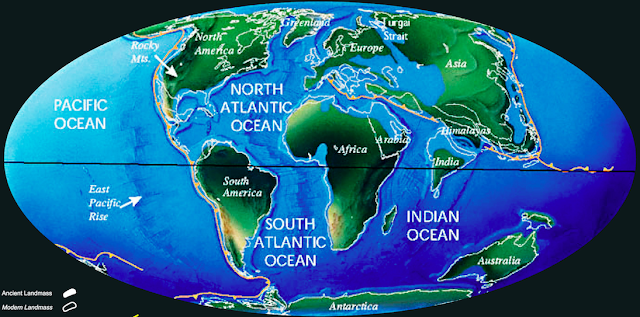TellUs: "The Earth's Story" Series, Rise of the Dinosaurs!
The Earth’s Story Series: Mesozoic Era
This blog carries on throughout the Phanerozoic eon or ‘the time of visible life’, consisting of the Palaeozoic, Mesozoic and Cenozoic era’s. In particular this blog is focusing on the Mesozoic era or the ‘middle era’ of deep time. If you want to learn more about the Palaeozoic era, the era before this one, it was addressed previously in my last blog - so check that out if you haven’t already!
Mesozoic Era
Reptiles and small mammals appear early on within this era, with the first birds arriving towards the end. However the icon of the Mesozoic era is of course the rise of the dinosaurs! By the end of the Triassic period and going into the Jurassic period, another mass extinction eliminates many species (what’s new) however dinosaurs remain! Not only do they remain but they become the dominant land vertebrates. They continue to thrive, evolve and dominate throughout this era, a timespan of 150 million years.
The temperature is toasty! It’s a time of global warmth and in fact temperatures were estimated to be 5oc higher than global temperatures seen today. Therefore it is no surprise that the polar regions were ice-free at the point.
Moving onto the plant kingdom now and what that was up to way back in the day! Seed-bearing plants and trees, including tree ferns and conifers, appear early on. The reason being is that they are able to adapt more-so to the drier conditions. By the end of the era, into the Cretaceous period, flowering plants appear. Flowering plants, including trees, also adapt to most conditions effectively. They do so by producing seeds rapidly and efficiently, that are quick to colonise new areas. As crazy as it may sound, they provide us today with almost all our food crops!
Most of the Earth’s landmasses remain locked together in the supercontinent Pangaea (which we addressed in my previous blog) and some of its land areas far away from the oceans become dry zones and deserts. However later on throughout this era we do see this supercontinent dispersing and drifting into the modern continents… kind of. The continents are still distributed differently around the globe, so the map doesn’t look quite right by modern day standards. Antartica still connects to Australasia and the Indian subcontinent is a long way south of the rest of Asia.
 |
| Map of the Earth showing the shape & distribution of its continents 65 million years ago |
Thank you for reading my overview of the Mesozoic era, please check out my previous blogs that all tell The Earth’s Story and make sure you subscribe to get notified when I upload! My next blog will be on the Cenozoic era, where early humans greet us and we yet again experience another mass extinction!
Comments
Post a Comment